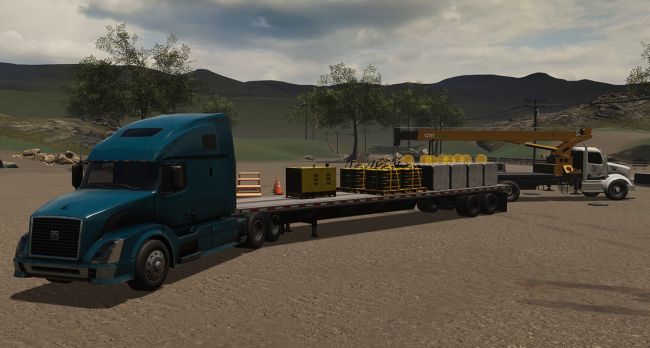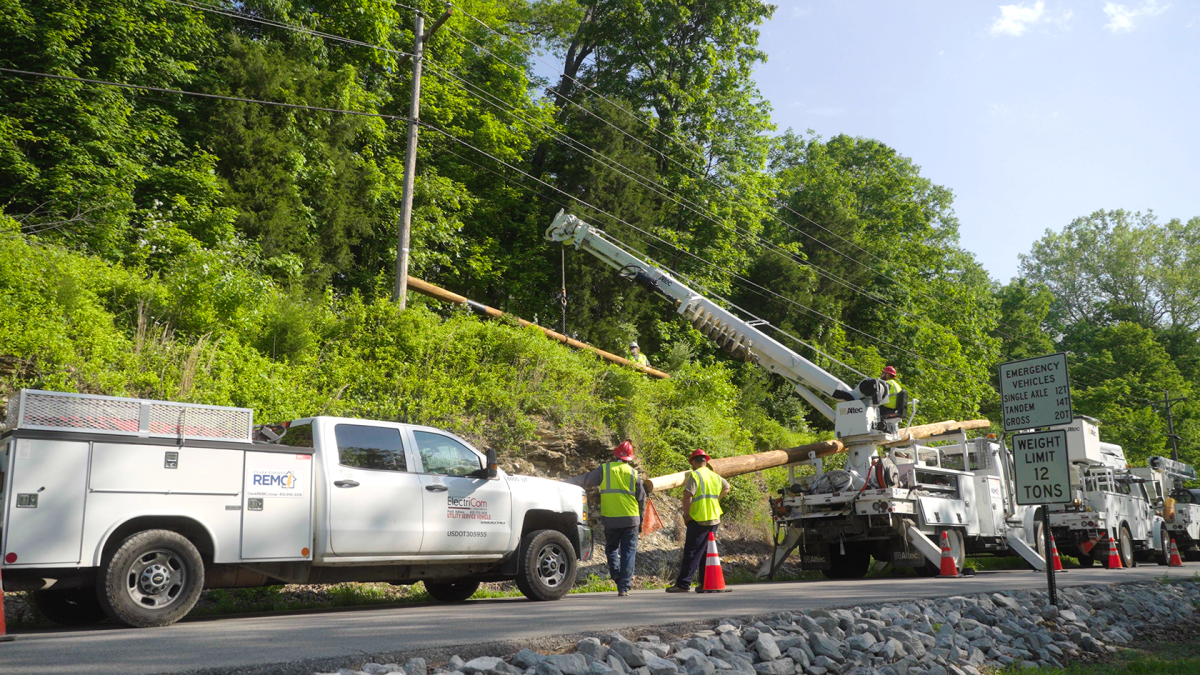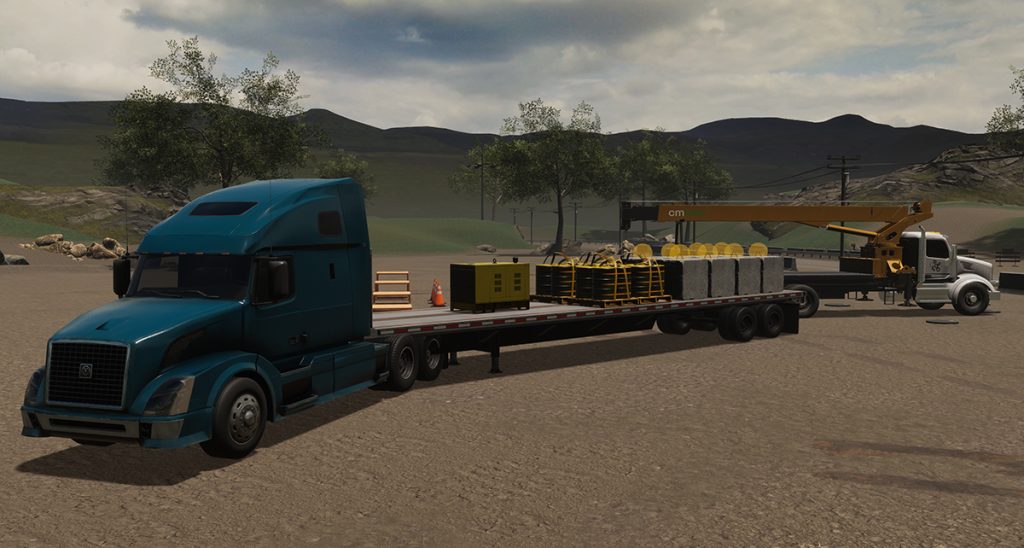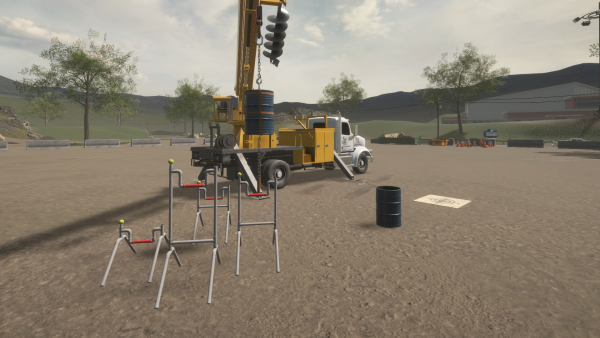
Reduce Risk with New Strategies for Operator Training
Simulation technology offers many benefits, including its ability to reduce the likelihood of safety incidents.
Utilities and utility contractors highly value safety. However, labor shortages can sometimes corner field supervisors into making a judgment call about whether an equipment operator is ready for the task. If Foreman A believes an operator is ready after several weeks of training but Foreman B believes the operator still needs several months, who is right? Training directors can support their field supervisors by objectively preparing operators to be ready for hazardous or complex work.

When time is of the essence, especially during storm response to return power to customers, field supervisors need to have confidence in the skill set of their crew. The worst time to find out that an operator isn’t ready is when they’re on the job site with live equipment and other people around. Without the ability to objectively assess operator readiness or adequately train them for high-risk scenarios, gaps in training might only become obvious in hindsight after a safety incident.
What Does a Good Training Strategy Look Like?
In a perfect world, training programs would quickly get classrooms of operators to full proficiency. They would easily identify operator weaknesses and provide the targeted practice needed to address them. They would even allow digger derrick, crane or earthmoving equipment operators to practice the most dangerous scenarios they could encounter, including rare events such as equipment faults that require split-second decisions to avoid an accident. Any assessments of operator abilities would be objective, data-driven and fair. In an ideal world, training programs would be available 24/7, with no cost to fuel or maintain equipment.
Some of these goals may sound far-fetched. But with the right technology, these goals could become reality.
Simulation: The First Step to Safe Training
While simulation has long been a mainstay of training programs in industries like aviation, the practice of using it for operator training in other industries is still relatively new. That short history, however, has already provided significant results. Among early adopters in utilities, construction and ports, simulation has helped cut training times; reduce in-field equipment reliance; lower both training costs and training-related emissions and equipment repairs; reduce operator cycle times; and train operators any time of day or year, regardless of weather conditions.
Each of these benefits is impressive, but the key value of using simulation comes from its ability to reduce the likelihood of a safety incident.

Part of simulation’s success comes from its ability to introduce operators to high-risk work in a safe environment, where you can simply press the restart button when something goes wrong. If the equipment tips over or contacts a power line in a simulated exercise, that mistake becomes a useful learning opportunity rather than a disaster. Operators can even practice these types of incidents to learn exactly why a particular shortcut is dangerous or which sensations to watch for before equipment passes the point of no return and begins to tip. Further, some companies will use simulators to recreate accidents that happened on their site to show new trainees what not to do in certain situations. This helps to fill gaps in training that are difficult, if not impossible, to address on real equipment.
When learning a new piece of equipment, the operator will make mistakes. It’s expected. If you are an instructor, you would much rather these mistakes happen in a safe environment where you can easily discuss them with students and offer guidance, as well as have a student practice an exercise repeatedly to build muscle memory.
“When training exclusively on live equipment, coaching was difficult,” said Shane Matthews, director of training and development at ElectriCom, a utility infrastructure contractor based in Indiana. “With the simulator, I can literally put hands on hands. I can move the trainee’s hands, coach them and have a discussion.”
Simulation allows instructors to address key safety risks before they become a problem. But there’s another type of technology that is taking training initiatives even further. It’s known as an intelligent training system.

Elevating Training with an Intelligent Training System
Simulation technology is at a point where training organizations can take advantage of the tremendous amount of data the simulator generates – such as trainee performance, physics data and machine behavior – to make strategic decisions.
Instructors can use a training system’s advanced reporting features to gain detailed information on everything from cycle time to idle time to safety violations (e.g., contacts with power lines). They can then use that data to offer targeted practice to operators and address any shortcomings before they become a safety risk.
Organizations can also save and store training data, gaining a concrete record of training initiatives that demonstrates due diligence.
However, to reduce an intelligent training system to its reporting features would only tell part of the story. At its core, an intelligent training system is a system that centralizes, enhances and simplifies the management of simulated instruction. It turns an approach that used to see one trainee on one simulator being supervised by one instructor into a training system that provides the opportunity to monitor, update and manage multiple simulators from one central and secure hub.
With an intelligent training system, one instructor can monitor multiple students at once via tablet, walking among them and offering guidance when necessary. Instructors can also inject faults – such as a flat tire – on demand to see how trainees react. Additionally, they can craft custom learning paths that require trainees to complete exercises at a certain score before they can continue to the next scenario.

All these features make the intelligent training system scalable. Organizations can add more simulators, controls or software for different equipment types at any time to suit training demands. The system also allows for secure and streamlined maintenance, updates and support, allowing training programs to evolve over time. An intelligent training system can continuously integrate new features and improvements as they are developed, ensuring that training programs do not become outdated over time.
Who Benefits from an Intelligent Training System?
Here are some ways this new approach to operator training can benefit all levels of an organization:
- Executives benefit from having a clear record of training in case of an accident, as well as robust operator data for costing projects.
- Instructors can test operator abilities before they move to the job site, using customizable scoring thresholds to ensure only those fully qualified move on.
- Recruiters can assess whether candidates have the qualifications they claim to have in their applications.
- Information technology support staff can connect an intelligent training system to the organization’s learning management system for efficient training program management.
- Human resources departments can evaluate their organization’s existing workforce, allowing them to uncover and nurture existing talent using objective, unbiased data.
- Instructors can use training data to offer personalized support to students, monitor many students at once and develop learning paths that best address their organization’s training needs.
- New operators can learn at their own pace, with concrete and objective data on where they are excelling and where they need to improve.
- Experienced operators gain easy access to new machines and the upskilling they need for professional growth.
- Best of all, operators can avoid becoming another statistic and cautionary tale.
Conclusion
With an intelligent training system, training programs and operator assessments become objective. Gaps in an operator’s abilities can be identified and addressed through targeted practice. Operators can also be thoroughly vetted before they join a team or step onto a work site. In the event of a safety incident, organizations can easily provide detailed training records to demonstrate due diligence. In short, the intelligent training system is a future-minded, data-driven system that is built to bring operator training to the next level.
About the Author: Alan Limoges serves as the manager of product growth at CM Labs (www.cm-labs.com), where he leverages a background in engineering and a track record of cultivating strategic partnerships.

